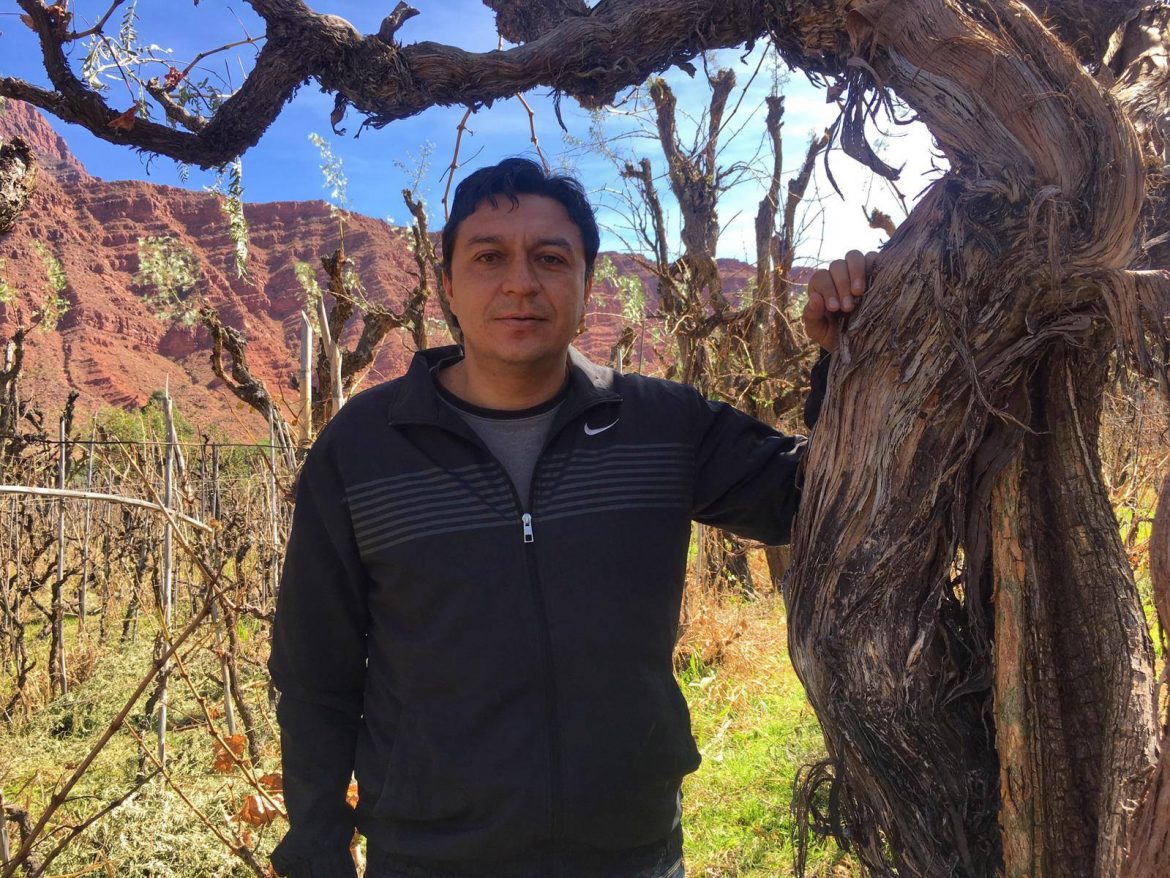Jaime Rivera is a fourth-generation vigneron in Bolivia’s Cinti Valley where he tends old Criolla vines of over 200 years old which are trained around molle and chañar trees. In this interview, Amanda Barnes asks Jaime Rivera about some of the secrets of the Cinti Valley including how the native grape variety of Vischoqueña arrived. They discuss traditional viticulture in the Cinti Valleys, and how he has learnt traditions passed on from his ancestors which he continues today with Bodegas Cepa de Oro.
So Jaime, how old is this vineyard that we are stood in?
This vineyard has plants that are over 100, in fact over 200 years old. Where we are there are the varieties of Negra Criolla, Vischoqueña and Moscatel.
Excellent, and these are the most authentic and oldest varieties, and original here in the region. Because some were born here in the region. Please tell us about the story of the Vischoqueña grape.
These regions are the most typical of the Cinti Valley wine region. The Vischoquenña, Moscatel and Negra Criolla, and the first to arrive were Moscatel and Negra Criolla. Which were brought here in the colonial era by the Spanish. The story of Vischoqueña says that in the region of Vischoca, here by the Rio Grande, they were bringing some vines (we don’t know what vines exactly) and the cart overturned with all the vines and the spilled all done the river. And on the river banks, these grapes started to grow, and because it was in the Vischoca region the grapes were named Vischoqueña, and it was a very productive grape, a delicious grape. And so here in the region of the Cinti Valleys we all started planting this grape too, especially near the Rio Grande (a river which runs down south here).
How interesting! And the other thing that is really interesting here is the way in which the vines grow – because here we have a vine and a tree. So the ‘tutor’ is the tree, and the grapes grow around it. Can you tell me a bit about the benefits of growing grapes in this way, why is it good for the vine to have this protection from the tree?
The old way of planting, the way my grandparents did for example, they say has the benefit of protecting the vineyard from hail, and frosts. By being in the tree, the grapes which are growing up here on the pergola (these trees are chañar and molle) are protected by both the hail and the frost. Because before we didn’t have hail nets, and it’s impossible to use hail nets with a formation like this. So our ancestors planted the vineyards like this for protection. The vines are also more productive when they are grown like this. This is a parral (pergola).
And how much can a plant growing on a tree like this produce?
Well it depends, on whether it is a molle or chañar tree. But it is around 10 kg per plant.
Great, and is it easy to harvest?
It’s very difficult! You have to go up with ladders to reach the grapes, and also to prune. You have to do everything by hand too.
Interesting. And here behind us we can see that Cinti is really in a valley between mountains…
Yes, exactly. And that’s what’s great about this valley. We call it the Coloured Canyon of Cinti Valley. It has a very unique climate, and thank God it is very suitable for grape growing because of these tall mountains. We have very hot days and very cool nights, which means the grapes arrive to an excellent maturity. We easily reach a minimum of 13% abv, and can reach 14 or 15% too. This is a great advantage we have here in the region, the grapes get to their full maturity.
And the wines are delicious!
Yes, I think so no? They have their characteristic of the region.
Read more on Bolivian wine:
